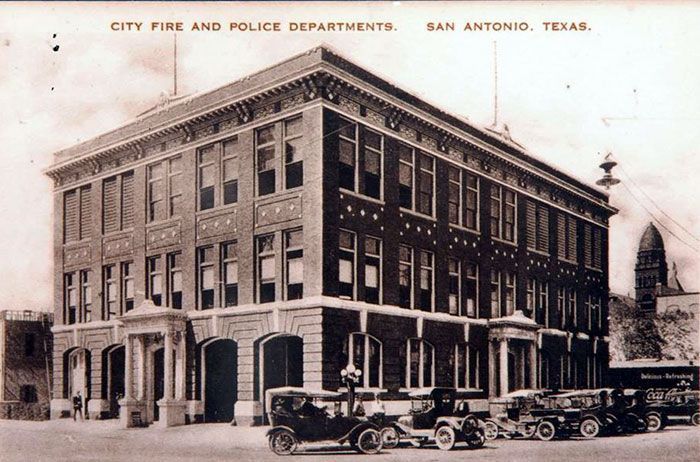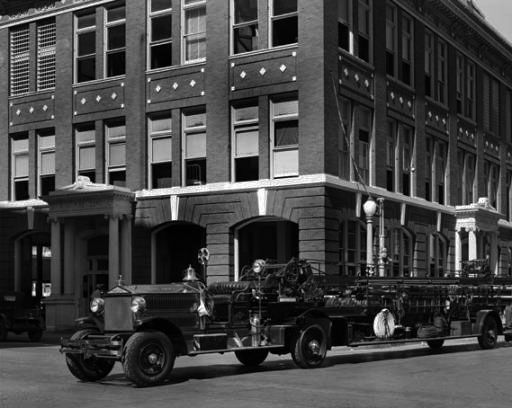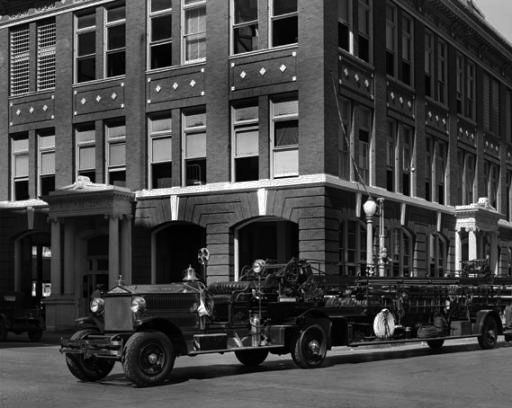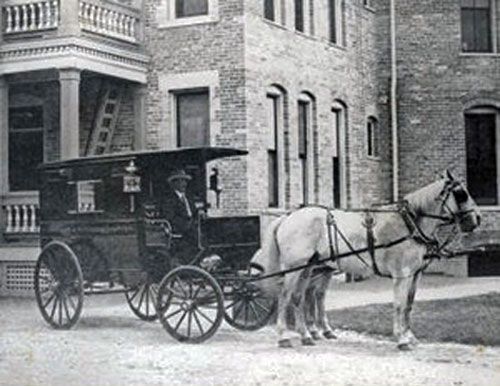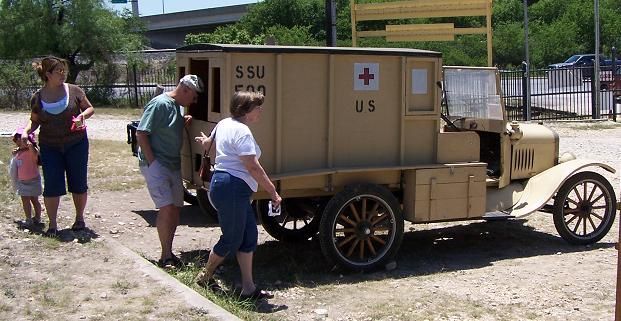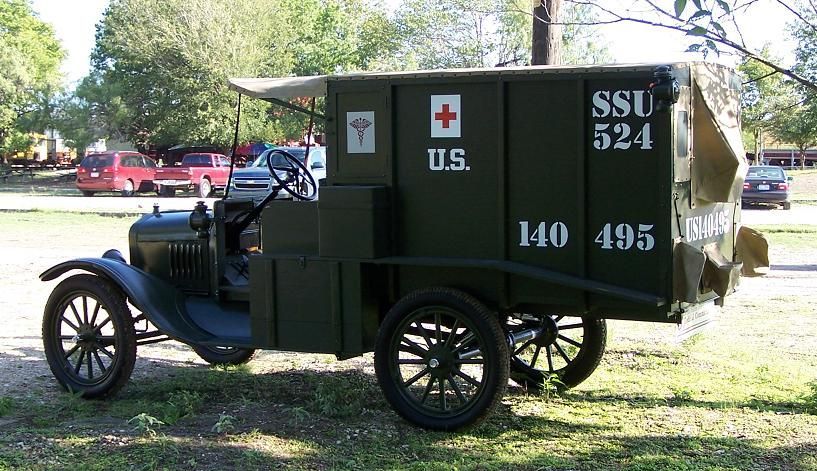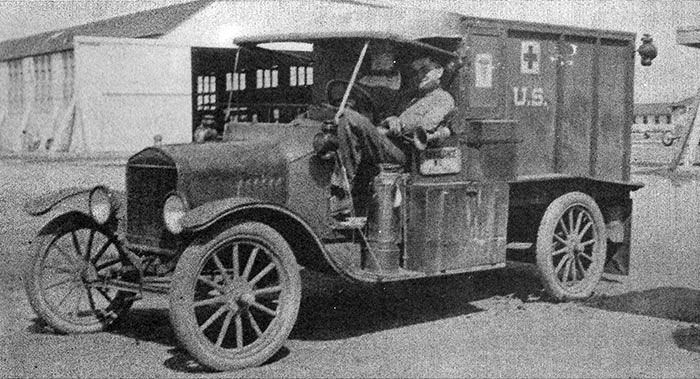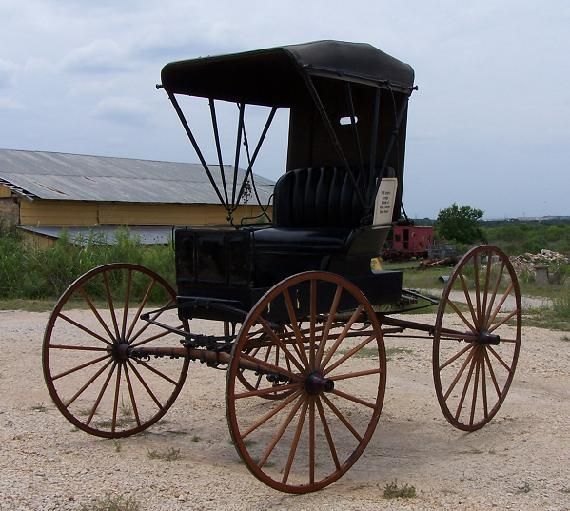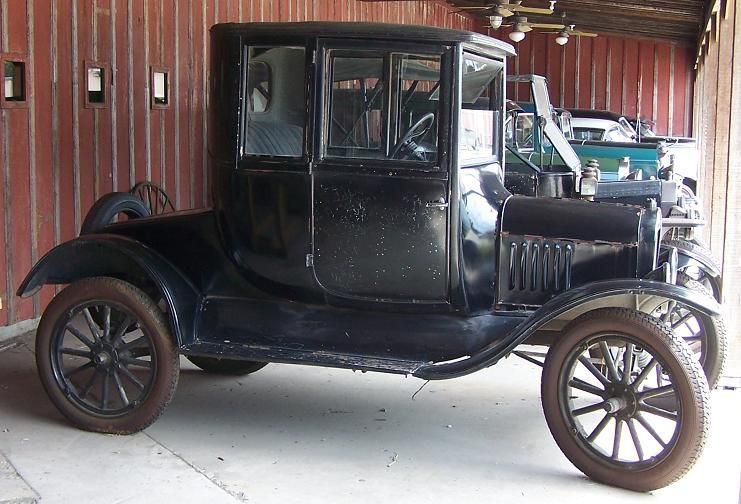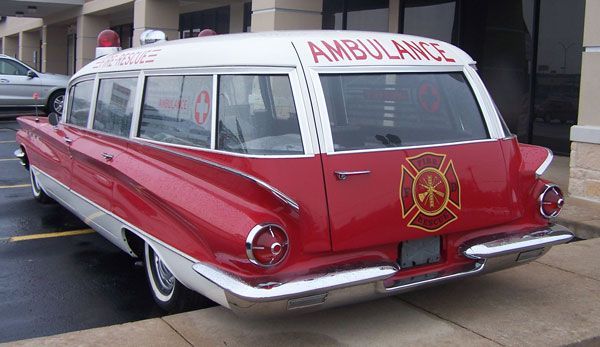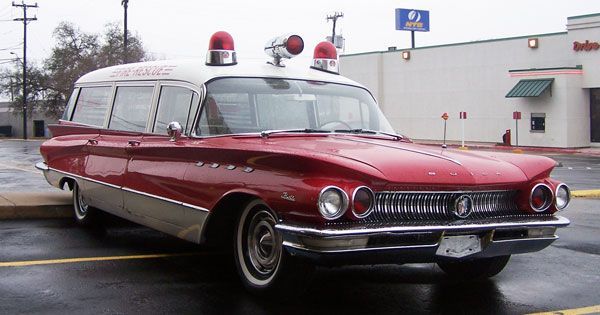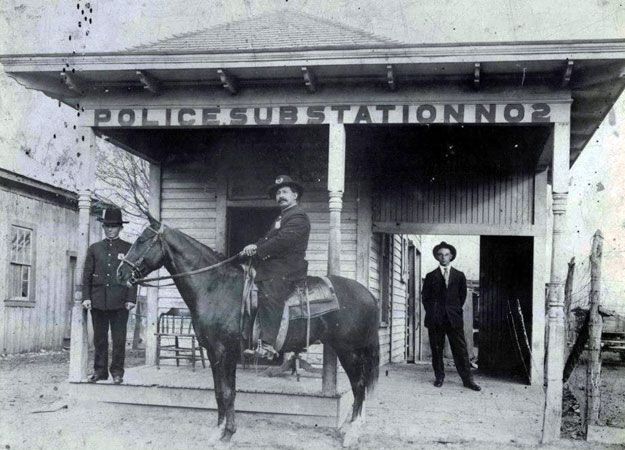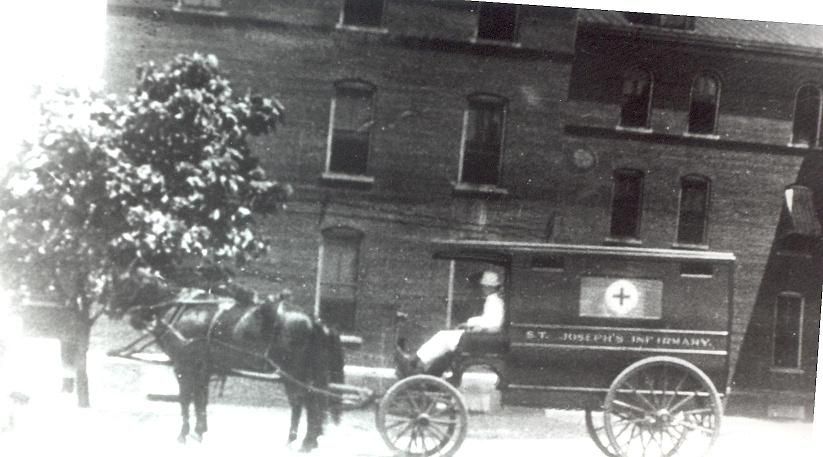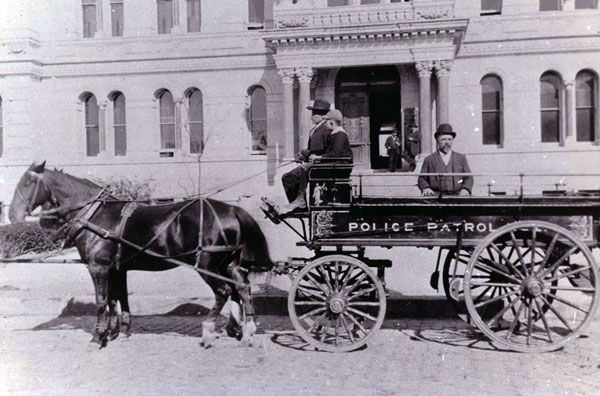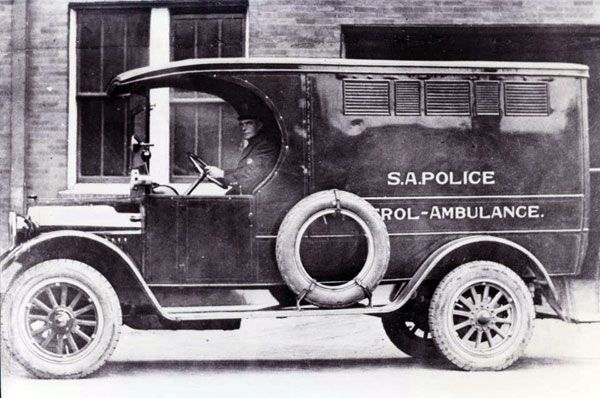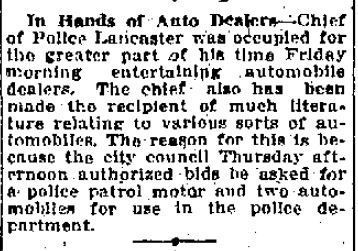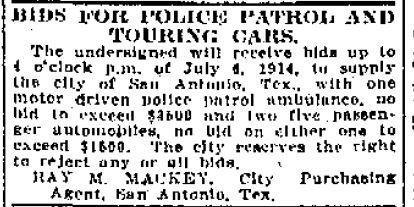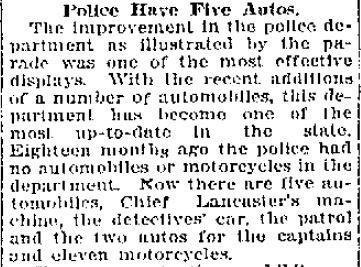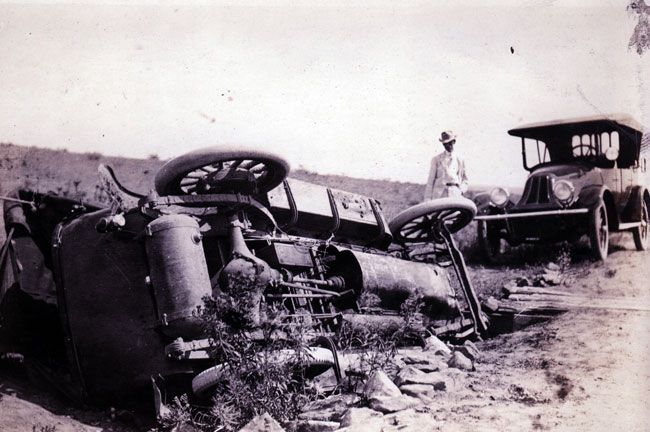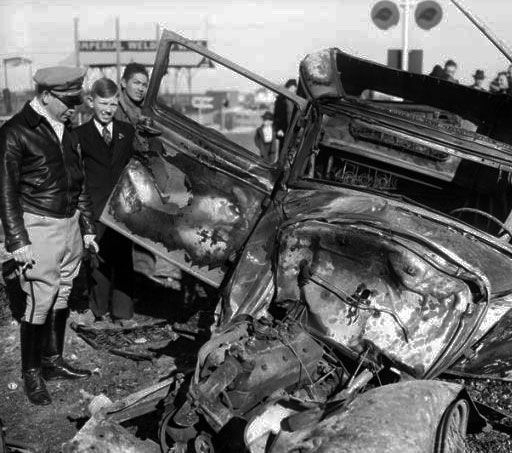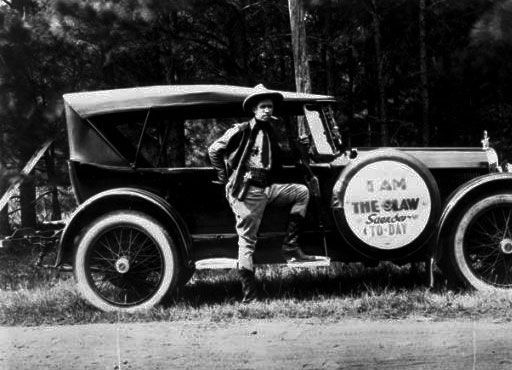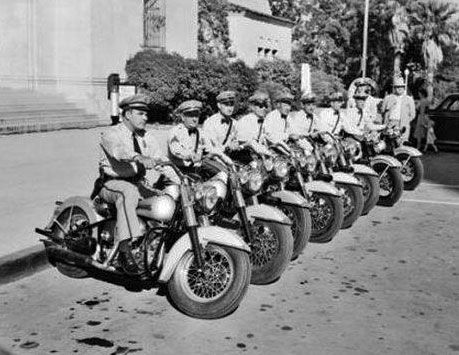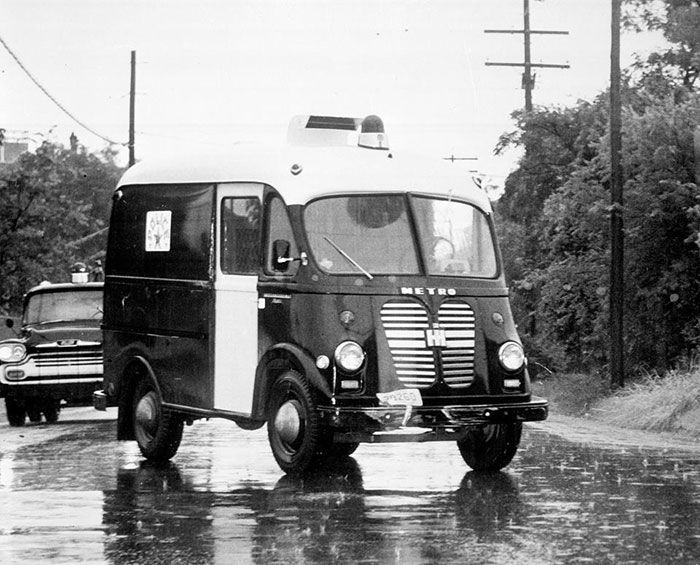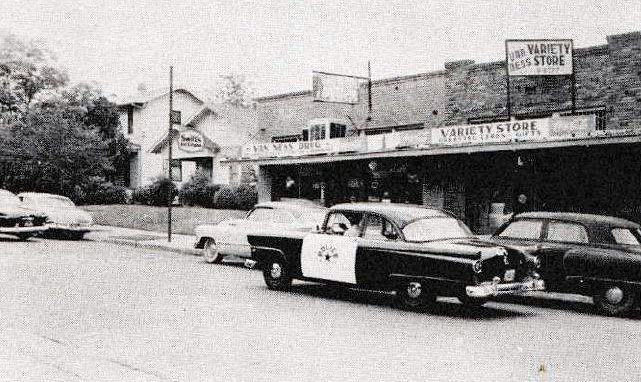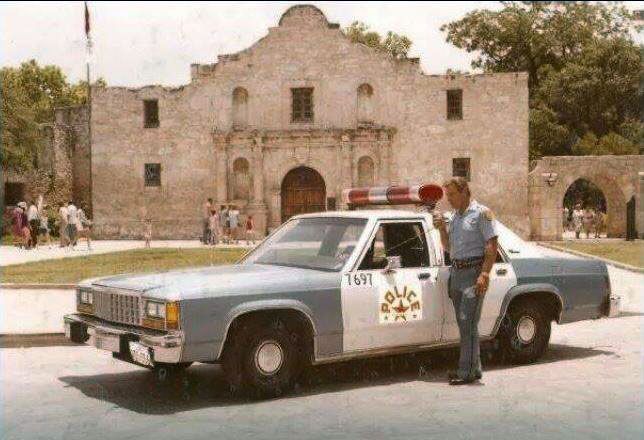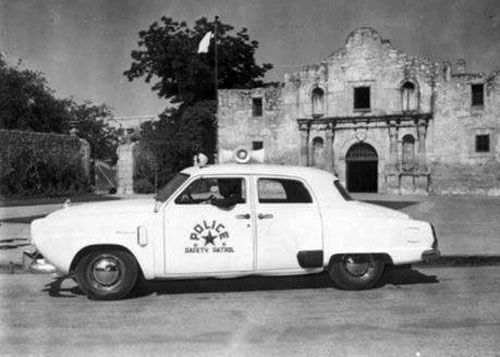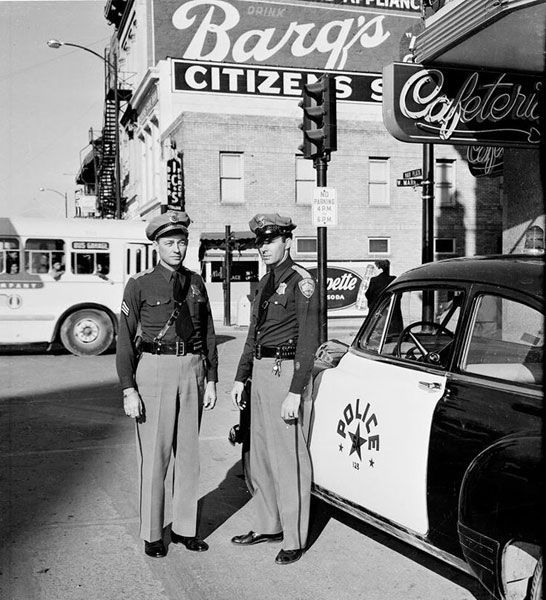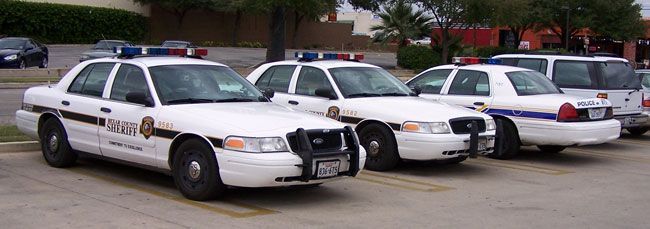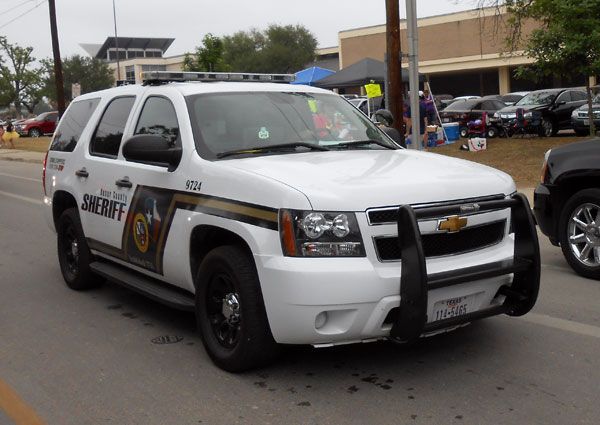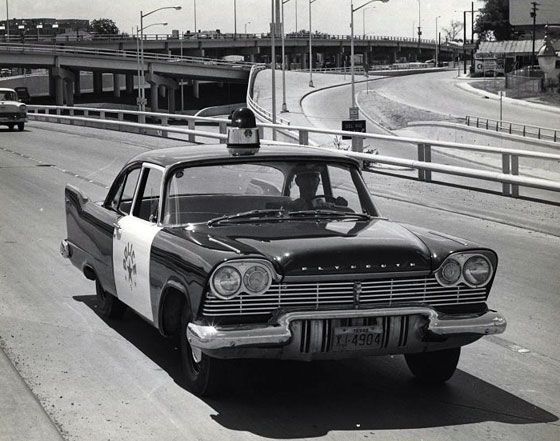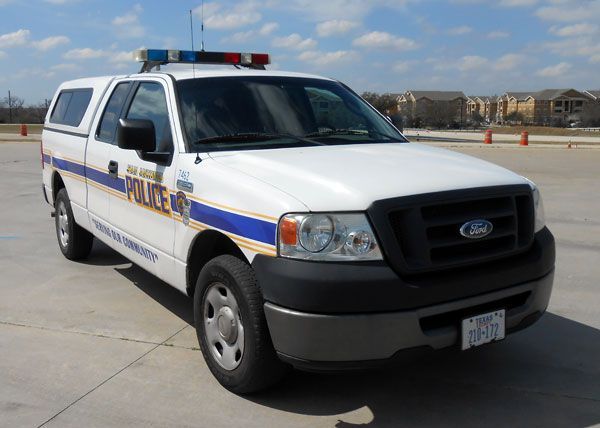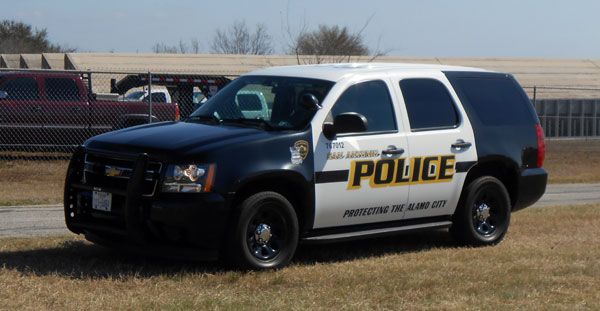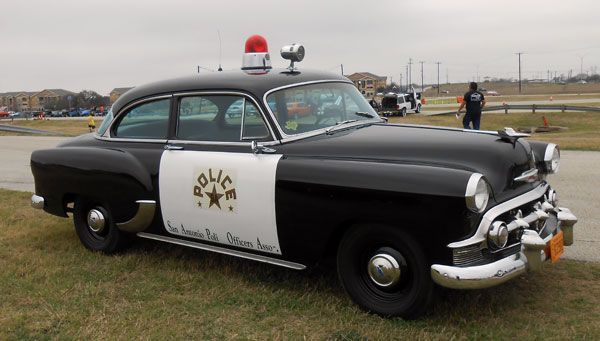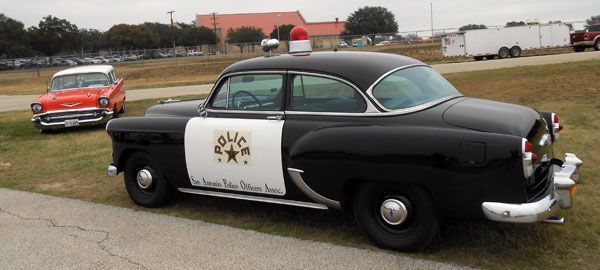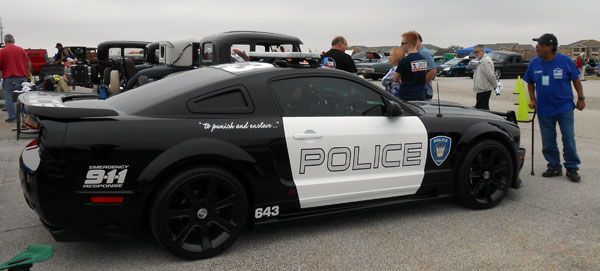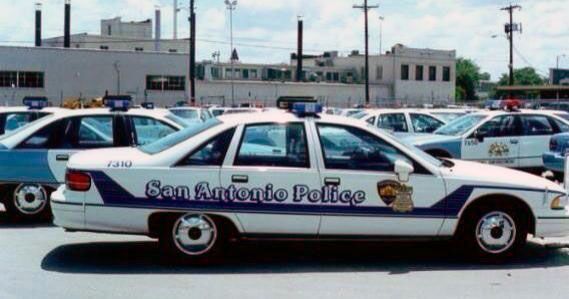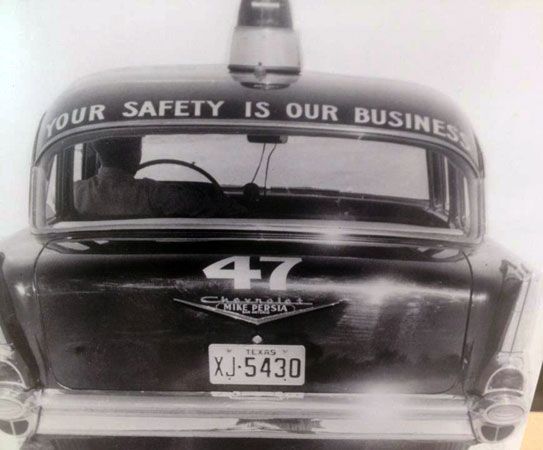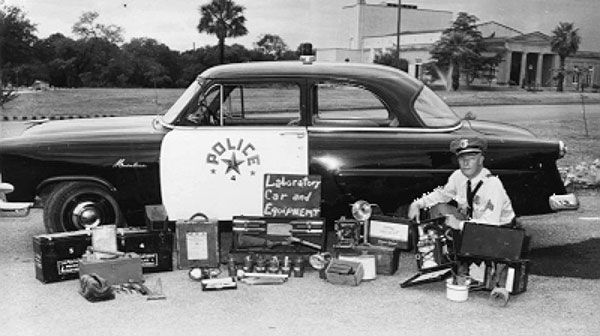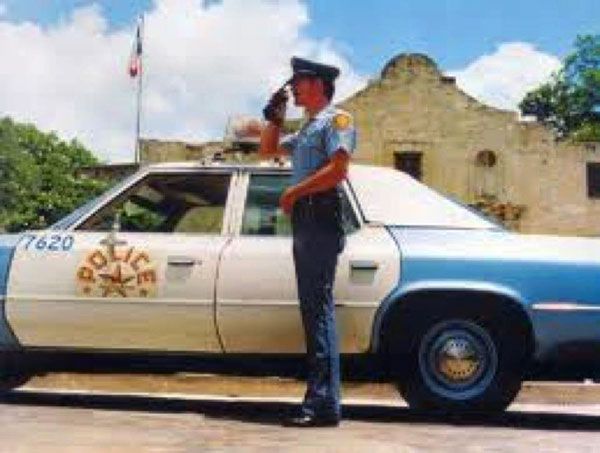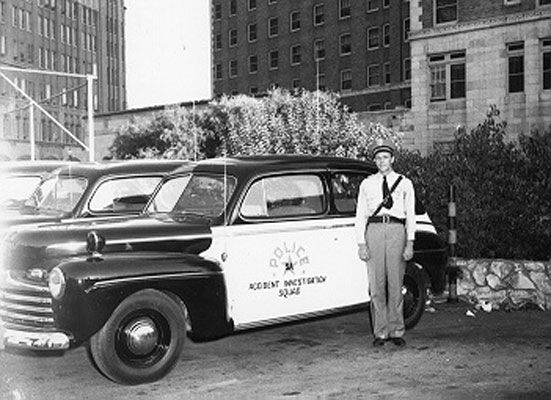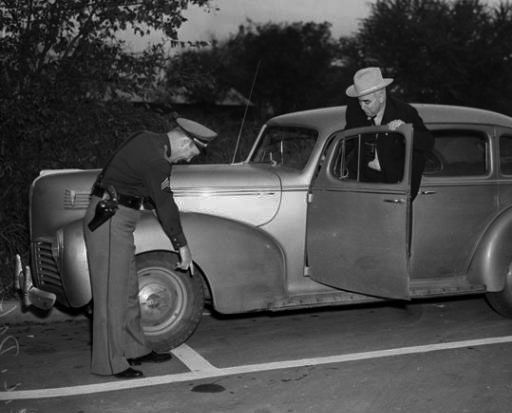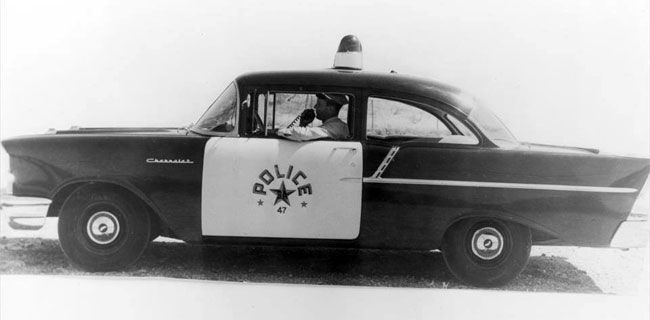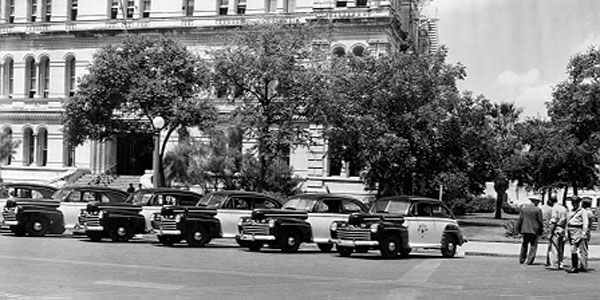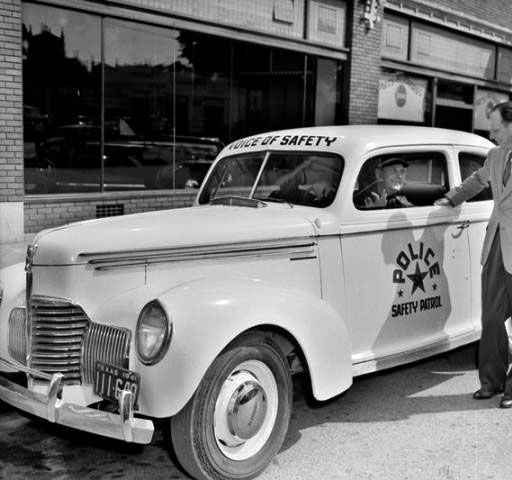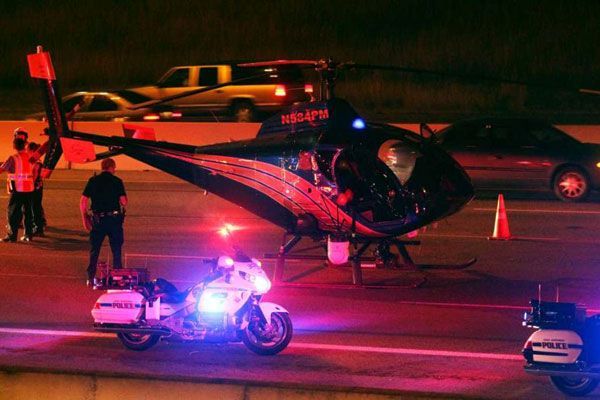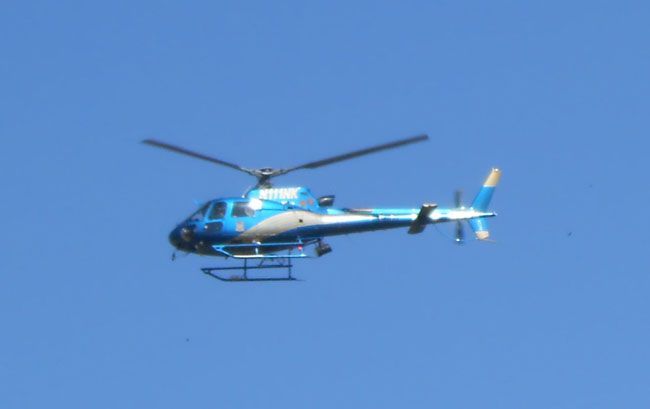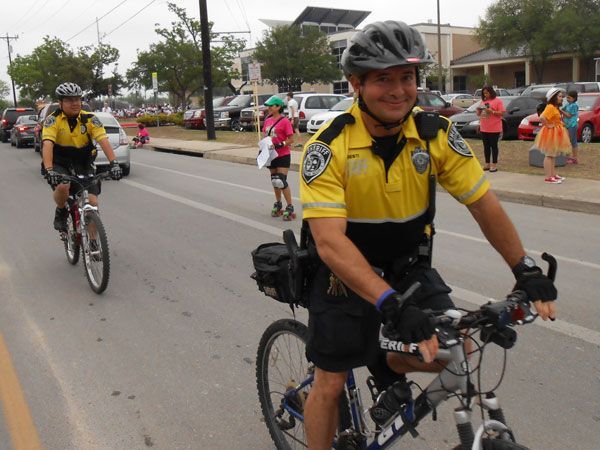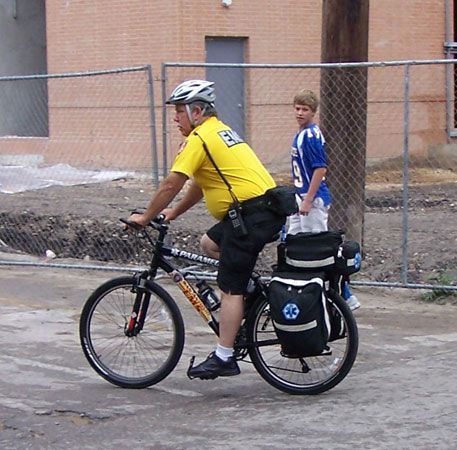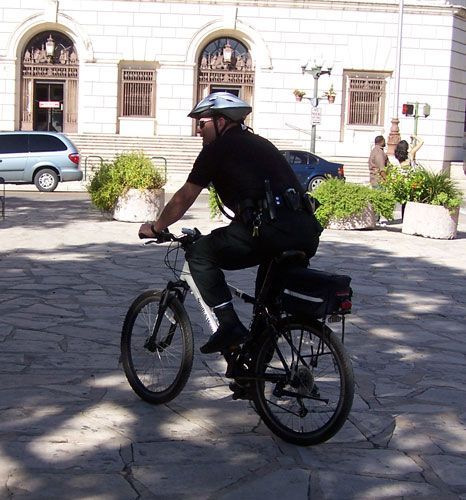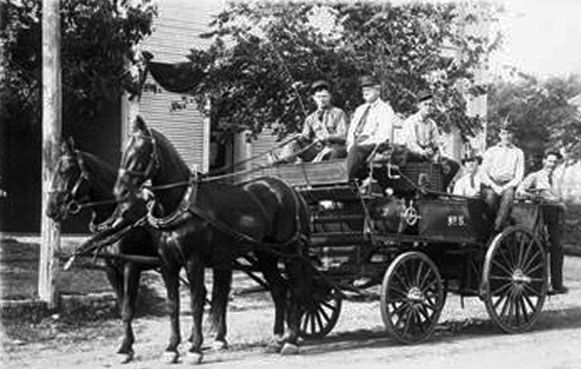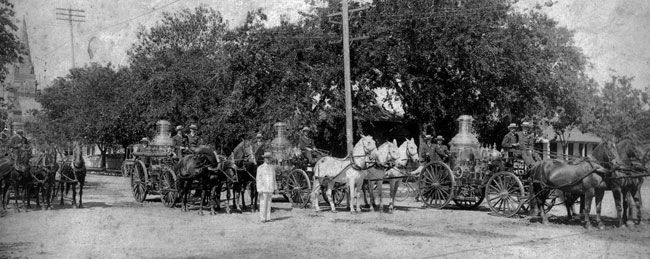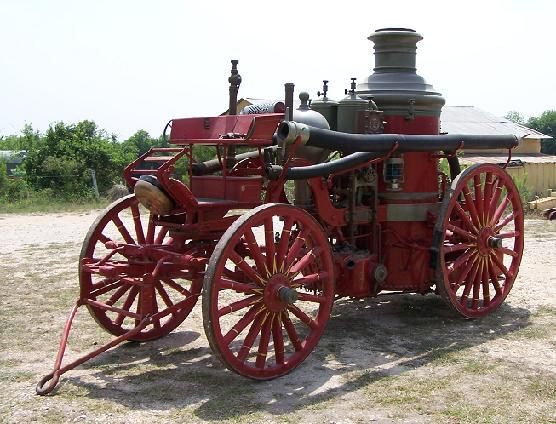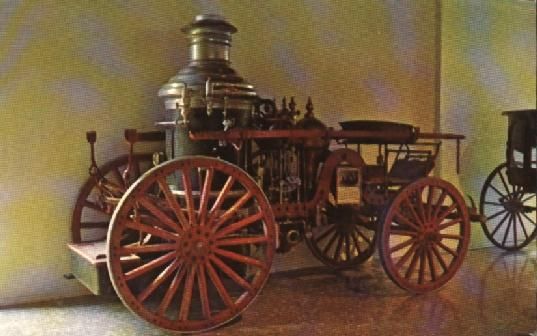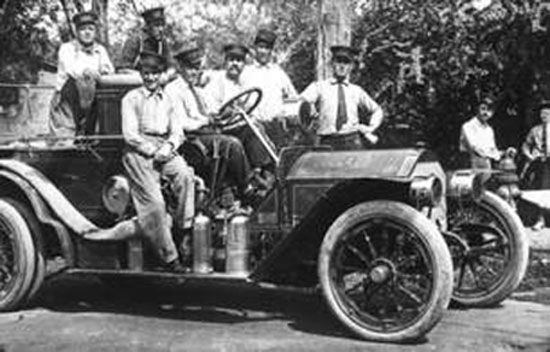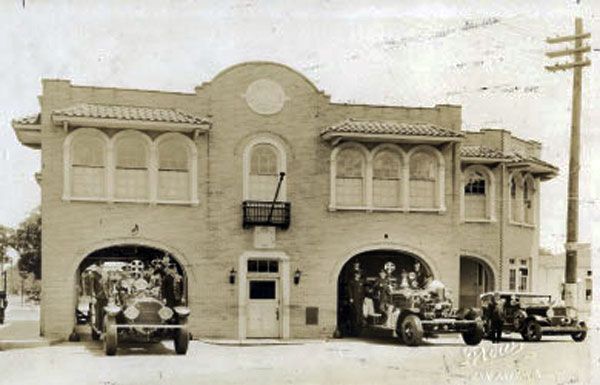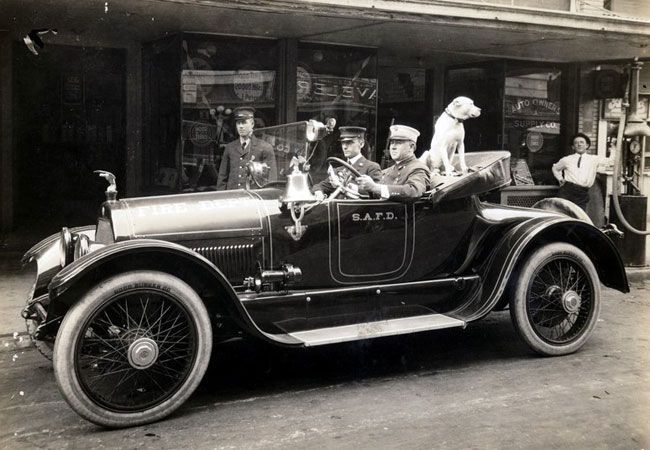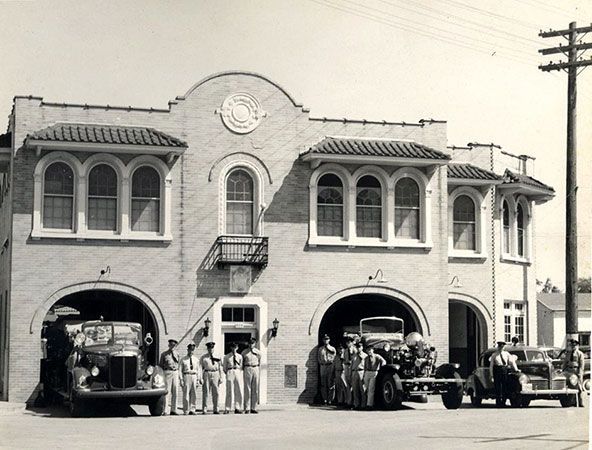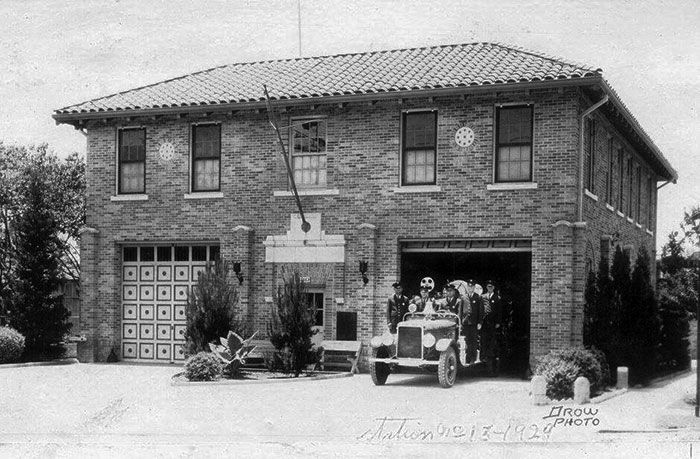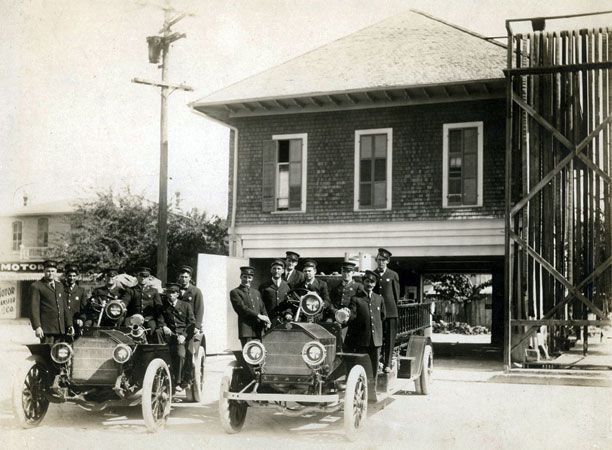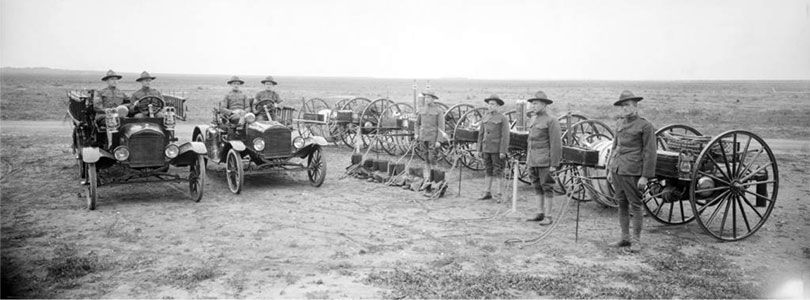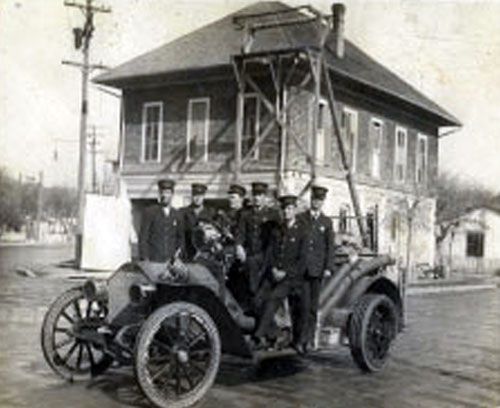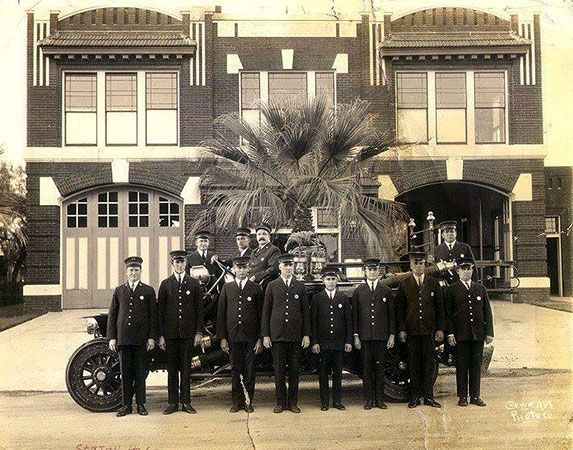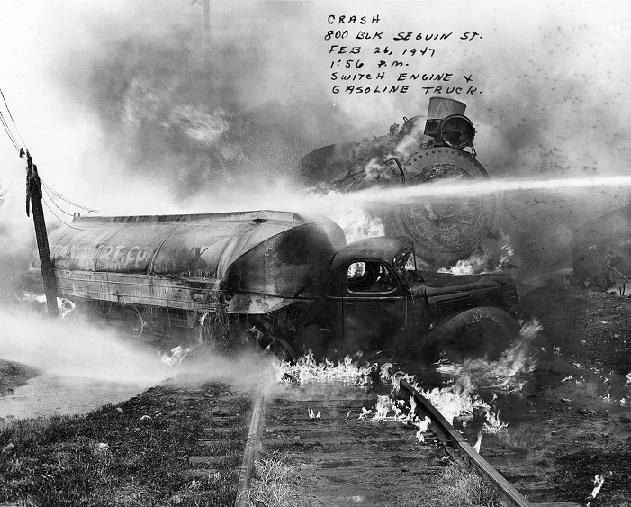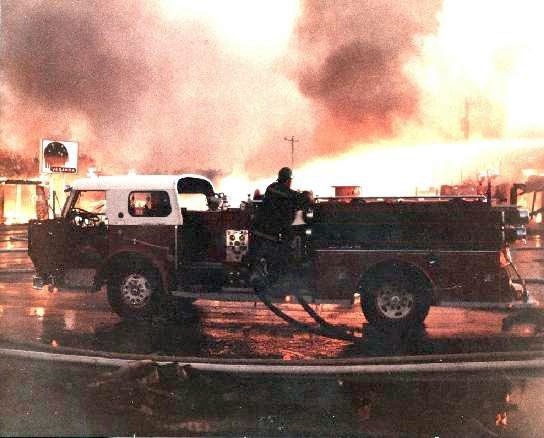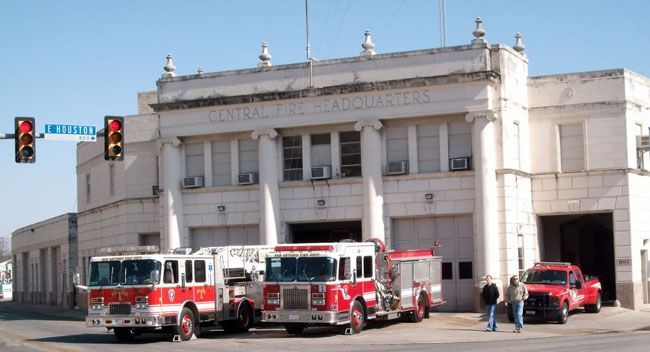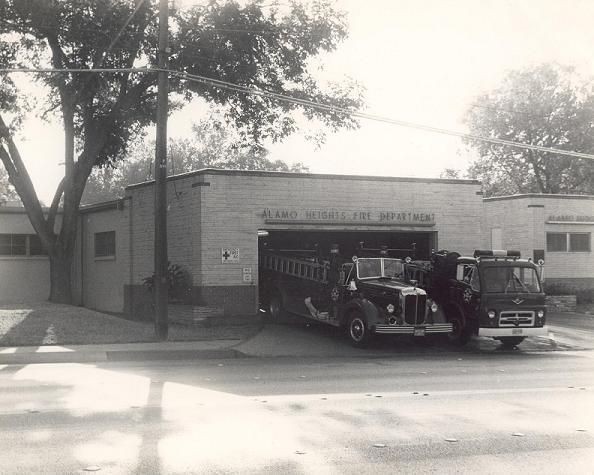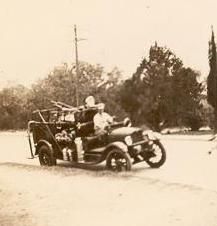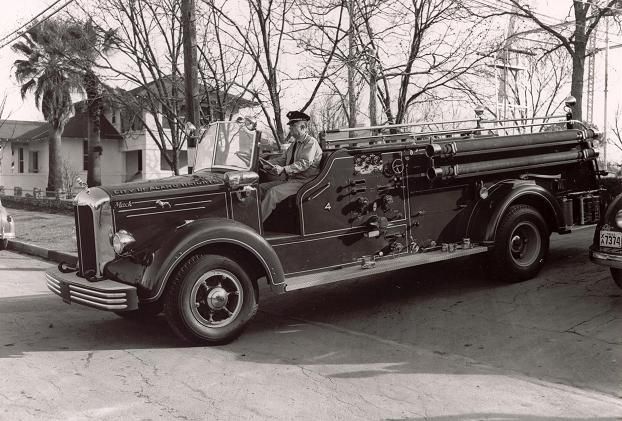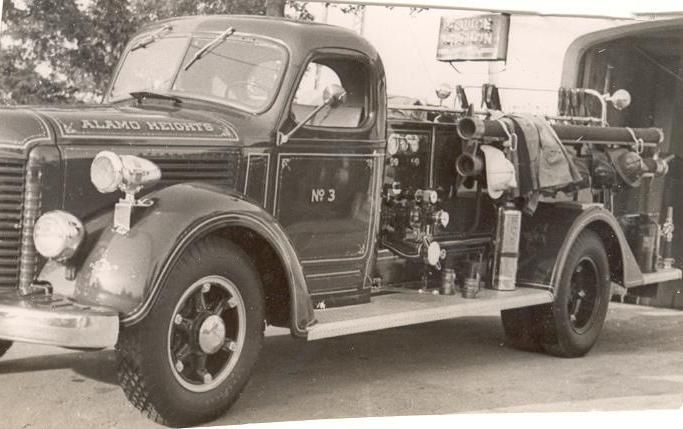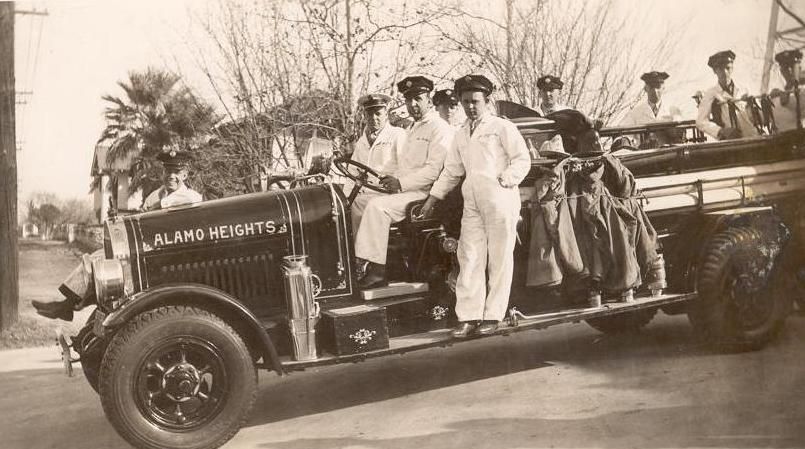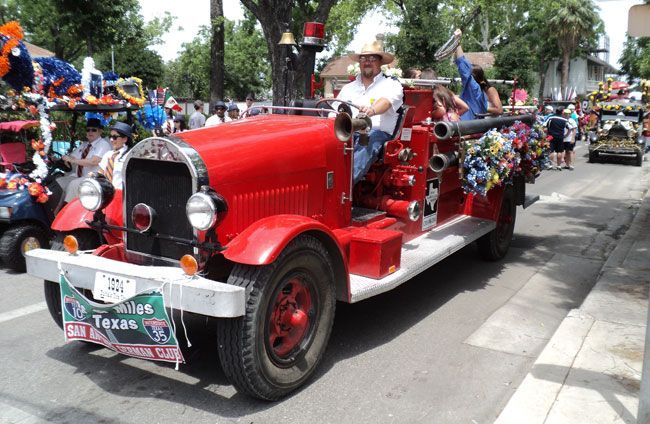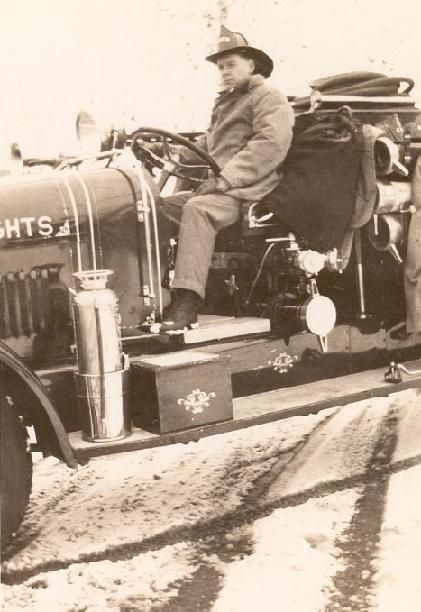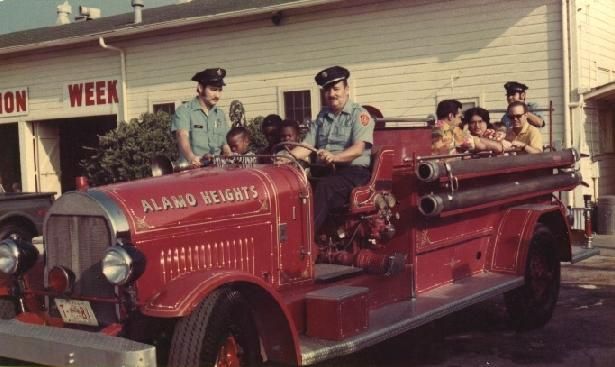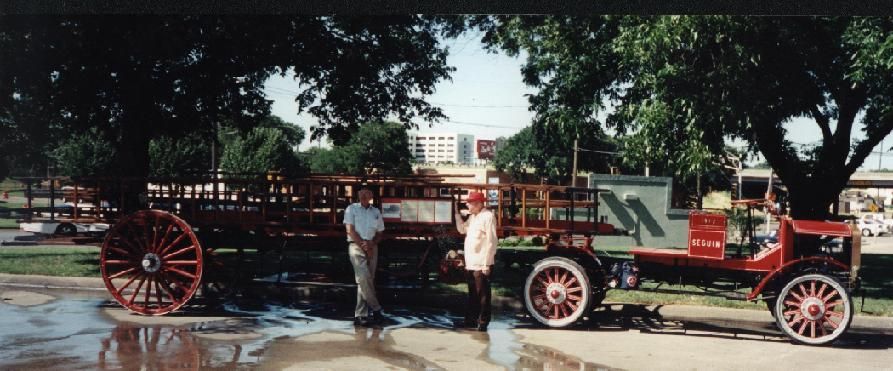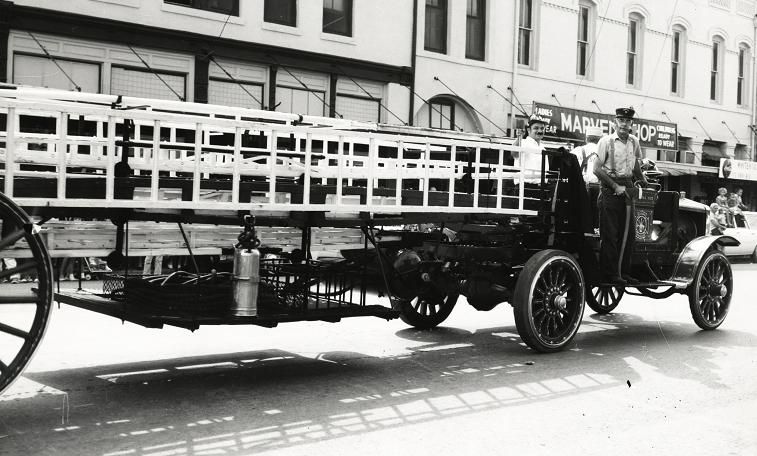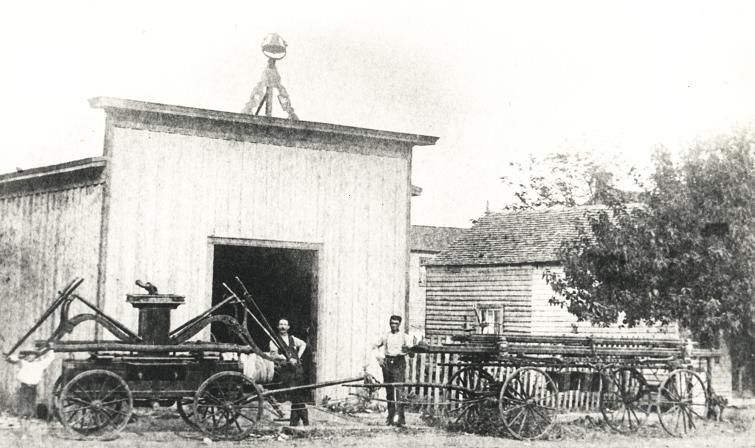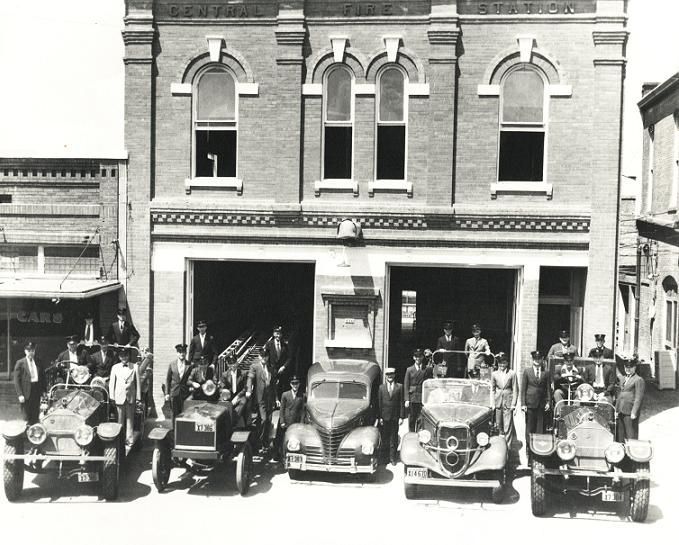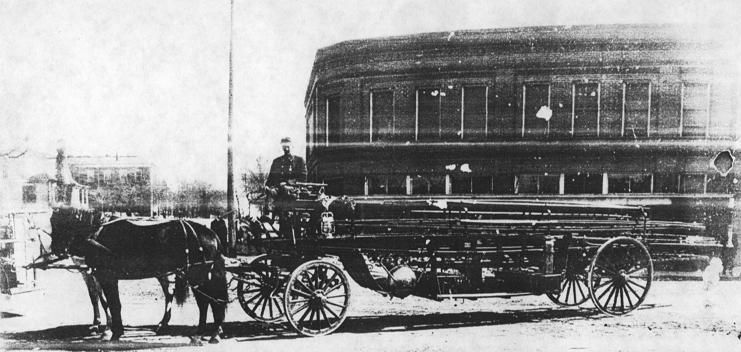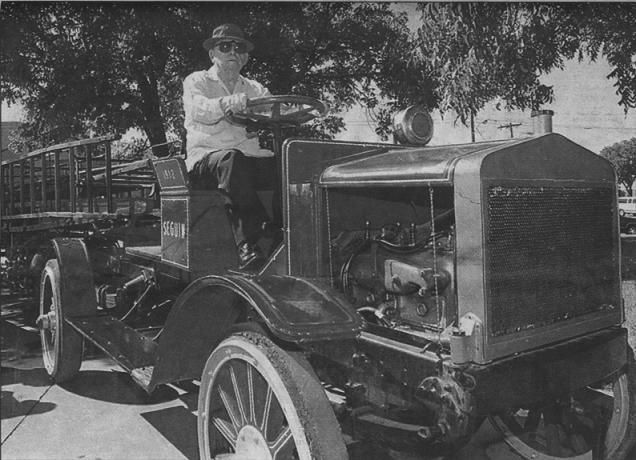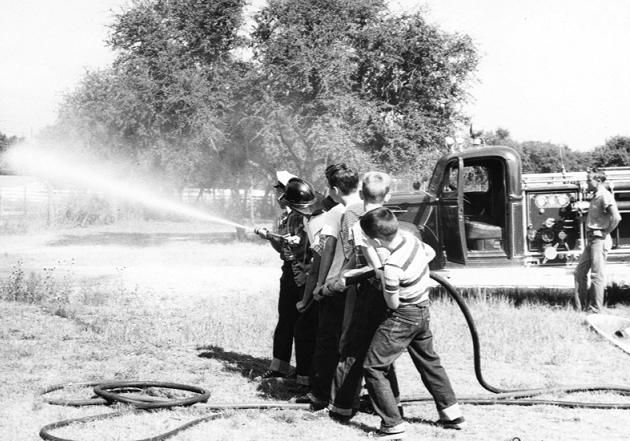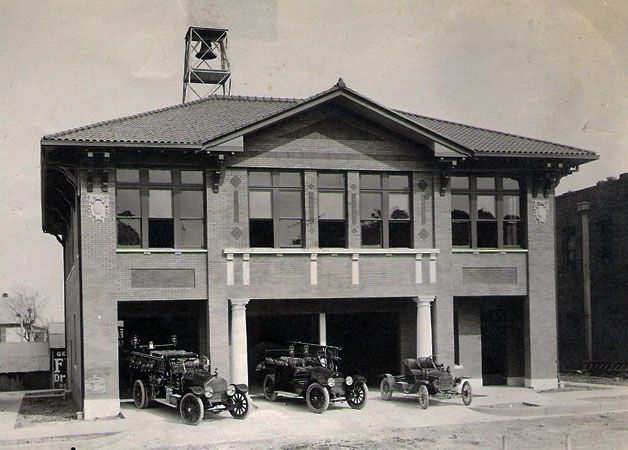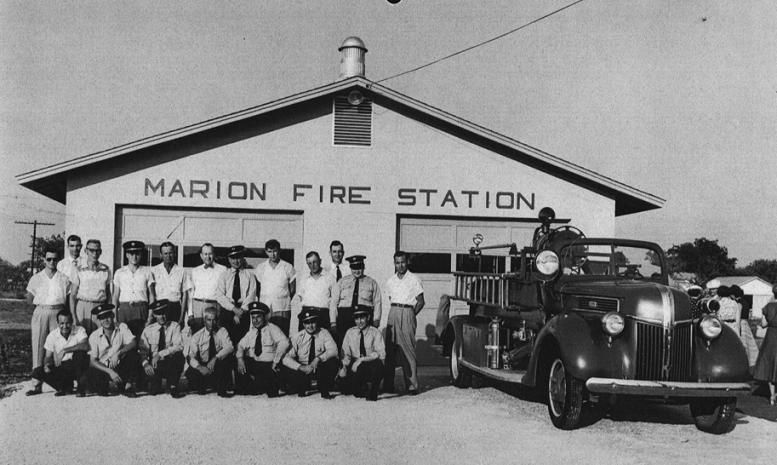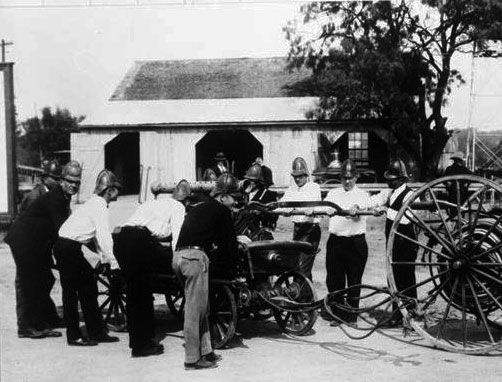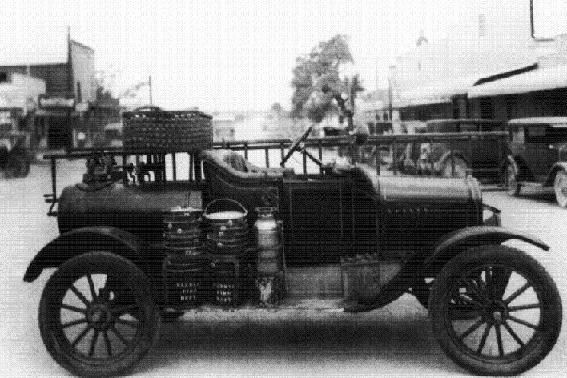history of Ambulances, Police Vehicles and Fire Trucks
Our thanks to the San Antonio Police Department Historical Association for their invaluable assistance with both information and images on this page. See link on right hand side for more about the SAPD HS
Joint SAFD & SAPD buiding in San Antonio
Hospitals, doctors, the police and the fire service have always needed specialized vehicles to carry out their tasks. Doctors used lightweight one horse wagons with high, narrow wheels capable of carrying just one person and the famous medical bag over any terrain under the worst conditions. It was easier for the horse to pull a wagon than have all that weight on its back and less tiring for the human as well. Also, many doctors were no longer in the first flush of youth and could no longer ride a horse, with knees and hips beginning to fail. As hospitals developed they employed lightweight covered wagons to bring in patients. These were given the name ambulance, the same word used to describe wagons designed to carry wagon train guards who had pulled overnight sentry duty. Over time the word has come to apply to only to only medical vehicles.
Early Ambulances
Very often, the first person in town to own an automobile was a doctor. He could justify the expense because instead of only being able to make two or three house calls a day using a horse, he might be able to make seven or eight with a car. The automobile industry copied the carriage trade and built vehicles specifically for this group, usually lightweight one or two seat vehicles with a large trunk and good ground clearance. Two of San Antonio's earliest automobile pioneers, Dr. Richard Goeth and L.F. Birdsong, were both ticketed for speeding to a patient. While Dr. Goeth, who was stopped by the same policeman he had early almost bowled over on Alamo Plaza, allegedly on his way to a medical emergency, managed to avoid a fine, Birdsong was not so lucky, though it is arguable that as a railroad surgeon, Goeth may not have been strictly telling the truth while Birdsong had been approached by another doctor whose own car had refused to start. These incidents led to the city including a requirement in subsequent traffic ordinances that persons using their own vehicles for medical emergencies display a prominent green cross on their windshields
Early Doctor Vehicles
1950s Buick Ambulance
SAPD - the San Antonio Police Department
Although the city published its first set of road regulations, including the instruction that automobiles must drive on the right side of the road, in 1910, it was not until August 1915 that the San Antonio police department acquired its first department owned motorized vehicle, an air-cooled Franklin purchased from local dealer Lewis Birdsong. The department paid $2,050, $46,600 in today's money, for the Franklin intended for Police Chief Lancaster. Mr. Birdsong's own records indicate that he had sold a Franklin to the department in 1910 but this may have been a private sale. Two officers may also have used their own motorcycles for police work before the department acquired its own machines. These followed the tradition of many officers using their own horses prior to mechanization. At the same time, the department was also authorized to purchase more automobiles and motorcycles. By November 1917 these had been acquired, giving the department the use of five automobiles and eleven motorcycles. By this time the automobile and its attendant problems were commonplace in San Antonio, where the first automobile club had been formed by thirteen charter members, including Mr. Birdsong, as early as 1903. At the same time the San Antonio Light was reporting on the acquisition of vehicles for the SAPD, it reported that a local plumber, Jonathan Bowman, a 72 years old immigrant from Liverpool, England, was struck by a north bound automobile on Alamo Plaza, immediately outside the Menger Hotel. He died in the horse drawn ambulance operated by Riebe, presumably a local contractor. The automobile's driver, one Felice Rojas, was arrested. He stated that Mr. Bowman had simply stepped off the sidewalk right into his path, perhaps failing to appreciate that cars go faster than horse drawn carriages. Local papers were also talking about the problem of overly bright head lamps at this time. Even the lowly Model T introduced a resistor into it circuitry to stop its six volt headlights receiving too much power from the magneto. A proper dimmed position was introduced in 1919.
In 1919 Comal County posted speed signs in and around New Braunfels and hired two motorcycle officers to enforce the 18 MPH speed limit on Highway 2, the post road between San Antonio and Austin. Within San Antonio, the posted speed limit in the downtown business district was a mere 10 MPH. Just outside this zone it rose to 18. Within the city limits it was 25 but persons passing on the highway were supposed to slow to 15 as most roads were still only sixteen feet wide, so the margin for error was very limited. The first electronically linked traffic lights in America were installed in Houston in 1922. San Antonio got its first set one year later. In the same year the department finally retired its last horse and set up a squad to deal with the growing problem of automobile theft.
By 1932 SAPD police cars could receive messages over the radio from police headquarters but it would take another three years before two way communication was possible. The department acquired four high speed patrol cars in 1934. The first parking meters in the city arrived in 1936. While it is sadly true that more people dies in automobile accidents in San Antonio each year than are murdered, the good news is that the death rate per thousand is only half hat is was in 1921. The police department also operated the first motorized ambulances in the city but this activity soon passed to funeral homes. Not all funeral homes thought this was a good idea. Porter Loring quit the business within just a few years in 1929. The crews were not provided with any training to take care of seriously injured accident victims. According to Emil Knaus, one of the first fire fighters in the city to be trained for emergency rescue work, they had also managed to acquire a rather unsavory reputation for dawdling if they thought the charge might die in order to capture the ensuing movement of the corpse. As in the rest of the country San Antonio made the emergency ambulances part of the fire department and began training fire department personnel to become emergency medical technicians, or EMTs. With the introduction of trained staff, and the correct movement of injured people, the number of both fatalities and serious long term complications has diminished rapidly.
SAPD Motorcycles
While the SAPD did not officially acquire motor-cycles for patrol work until 1917, records and newspaper accounts indicate that some officers may have used their own machines for official purposes far earlier.
SAPD Vehicles
SAPD Helicopters
The SAPD acquired it's first helicopters in early 1971, the same year as Dallas. Unrestricted by ground obstructions, these speedy machines allow the SAPD to monitor traffic, look for missing persons, follow fugitives and get a situational overview during natural disasters, such as flooding and fires. The helicopter unit is based at Stinson Field on the south side of the city.
SAPD Bicycles
Created in 1990 as part of an effort to clean up downtown San Antonio, the SAPD bike patrol was remarkbaly effective in making citizens feel safer and criminals far less so. They are now a most welcome fixture downtown.
Fire Fighting Vehicles and Equipment in San Antonio and South Texas
Few organizations need more specialized vehicles than the fire service. When the fire volunteer fire fighters, the Ben Milam Fire Company, was formed in San Antonio in 1854, they had little more than two wheeled carts with a few ladders and many buckets. The first horse drawn steam pumper arrived in 1868. By 1877 there were five different volunteer organizations. The Milam Steam Fire Company, #1, was on Market Street between Tyturri and Cochran Streets. The Alamo Fire Association, on Avenue C between Houston and Travis, was Company #2. As well as two colored fire companies there was also the Turner Hook and Ladder Company. This took its name from the Turn Verein athletic club. The fire company was just one of the many public organizations that sprang from the civic minded German community.
These companies were united into the San Antonio Fire Department, or SAFD, in 1878 under H. Karber, but it remained an all volunteer force. The same year the creation of a city wide water system allowed for the introduction of fire hydrants but their equipment would continue to include pick-up hoses with cylindrical open grills to pump water from rivers and ponds for many years. The SAFD went professional in 1892. The same year three more steam pumpers, with fifty-six inch wheels in front and sixty-two at the rear, were delivered in person by Chris Ahrens of the Ahrens Fire Engine Company. One of these was donated to the museum in 1939 and is now on display at the Fire Museum in Houston.
In 1898 the city acquired another horse drawn steam fire pumper, built by American LaFrance. Pulled by three horses abreast, this machine, built in Elmira, New York, used a modern Fox sectional boiler to create steam to operate the pump that projected water onto flames in buildings that were becoming larger and taller. It still remains within the city. It was donated to the Texas Transportation Museum in the 1970s having been in storage since its last service to the city, draining out flooded basements downtown after the great flood of 1921. Efforts to create a San Antonio fire museum have been floated on several occasions but have yet to bear fruit.
These fire departments have grown as the city has swelled far beyond its original borders. The old North East VFD on Wetmore Road near Thousand Oaks closed for business when the area came under the jurisdiction of the SAFD. One its last pieces of business was to donate its much cherished 1958 American LaFrance fire truck, called Alfie, which had successfully served the area for decades, to the Texas Transportation Museum. This vehicle, was comprehensively restored thanks to the generosity of Roy Gilbert Jr., of SMT Truck Lines and has been used in numerous public activities, especially Fiesta parades, as has the 1924 Buffalo.
Fighting Fires in Alamo Heights
1924 Buffalo Ladder Fire Truck in Alamo Heights.
In 1924 the Alamo Heights Fire Department, formed in 1922, purchased a fire truck from the Buffalo Fire Truck Company of Buffalo New York. This company failed during the Great Depression. The fire truck has a GMC chassis and, currently, an inline six cylinder engine built by the Continental Company. It has mechanical brakes, no synchromesh on its four speed transmission and no windshield. Nonetheless it provided sterling service to the city as a ladder truck until it was donated to the Texas Transportation Museum in the 1970s when the State of Texas passed a law that stipulated that no fire equipment could be more than twenty years old.
Fire Fighting in Seguin
The first fire department in Seguin was formed in 1884 in a small shed just off Austin Street, the main business street in town. As was the case across the state, it was an all volunteer organization. By the 1920s the department had become professional and occupied an imposing fire house on the main square. It fielded all modern equipment which included an articulated ladder truck updated from horse power to a tractor built by the Wichita Falls Truck Company.
Fire Fighting in South Texas
